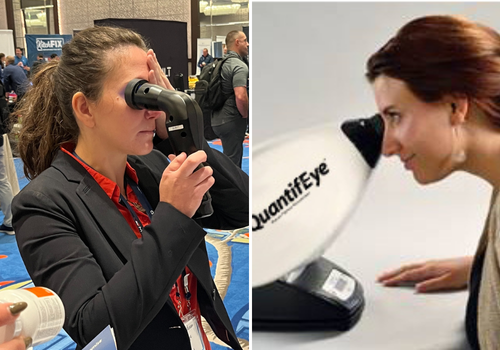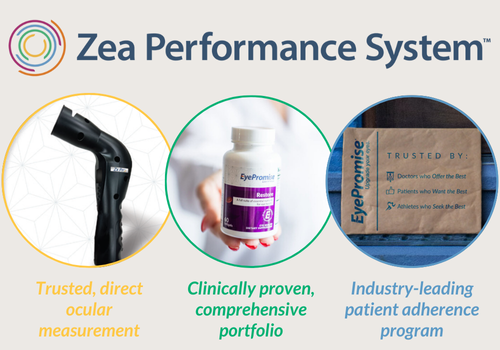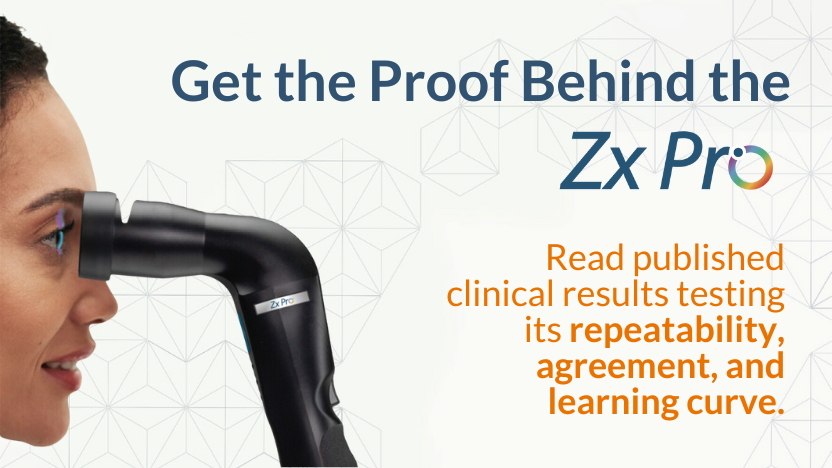PUBLISHED: Clinical Support Behind the Zx Pro™ MPOD Measurement Device
Posted by EyePromise on Feb 13th 2025
EyePromise® has exciting news! A clinical evaluation of the Zx Pro™ macular pigment optical density (MPOD) measurement device was recently published in the MPDI journal: Diagnostics. The journal is “an international, peer-reviewed, open access journal on medical diagnosis published semimonthly online.” Here are the details of the evaluation.
Objective
The assessment titled Evaluation of a Portable Handheld Heterochromatic Flicker Photometer in Measuring Macular Pigment Optical Density reviewed the Zx Pro’s:
- Repeatability
- Agreement
- Learning curve
These MPOD measurements were then compared to those of the QuantifEye® device, a clinically available desktop instrument using the same measurement technology: heterochromatic flicker photometry.
Methods
The evaluation included 76 participants in total with a wide range of ages and refractive errors. These participants were asked to complete the following on both the Zx Pro and QuantifEye devices:
- Perform one practice MPOD measurement exam.
- This is to ensure the study exams were performed correctly and to help determine the learning curve of each device.
- Perform two study MPOD measurement exams.
- This is to examine the repeatability of the exams and ensure that the same patient would get an expected result when measured more than once.
All study results were then compared to determine the agreement of both devices.

Results
The Zx Pro’s study-related MPOD measurements landed at 90% using the Pearson correlation, while the QuantifEye device was 85%, respectively. The two results pointed to both devices being highly repeatable, with the Zx Pro coming out slightly ahead.
The two devices show excellent agreement in MPOD data. Demonstrating this agreement using Altman and Bland plots, the Zx Pro and QuantifEye showed 95% limits of an agreement being within one density unit (-0.10 to +0.11 d.u.).
In terms of a learning curve, the Zx Pro’s average difference between the practice and study attempts was not statistically significant. However, the QuantifEye’s learning curve did measure as “significant,” though not enough to consider it a major learning curve.
Simply put, the Zx Pro delivers trusted MPOD measurements with an insignificant learning curve for patients.
How to Get the Most Out of the Zx Pro
Now that the Zx Pro has been established as a trusted diagnostic tool, how can you get the most out of it in your practice? The answer is simple: the Zea Performance System™.
The Zea Performance System is the turnkey nutritional program by EyePromise® that delivers this trusted diagnostic, clinically backed therapeutics, and industry-leading compliance and practice support. As you’ve read, the Zx Pro provides a repeatable and reliable MPOD measurement, an important clinical biomarker for ocular concerns like age-related eye health issues, visual challenges related to blood sugar control issues, and digital eye strain. Additionally, MPOD measurement can help assess visual function, systemic health concerns, and brain health.
Once you know your patients’ MPOD scores, you’ll inevitably want to modify some of them. Realistically, it will likely be the majority of them, as the national average (0.34 d.u.) falls beneath the optimal range (0.5 d.u.). EyePromise eye health nutraceuticals are the way to achieve this improvement. With the highest levels of dietary zeaxanthin available in the optimal ratio to lutein to match the fovea, EyePromise nutraceuticals are guaranteed to increase MPOD scores in 6 months.
But how can you help ensure your patients stay on track for those next 6 months until their retest and beyond? That’s where the Auto Refill Program (ARP) comes in.
This prescription delivery service sends your patients’ prescribed EyePromise product directly to their front door every 3 months automatically timed with when they need it. Along with convenience, the ARP also offers patients savings in terms of discounts on every monthly supply and free shipping on every order.

Learn more about the full Zea Performance System.
Interested in seeing how the Zx Pro can work in your practice? Contact your local EyePromise Regional Account Manager to set up a live demonstration today!

